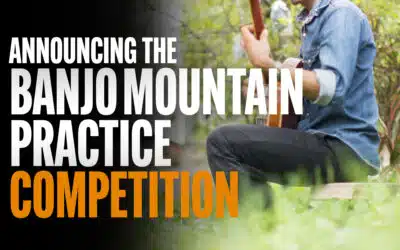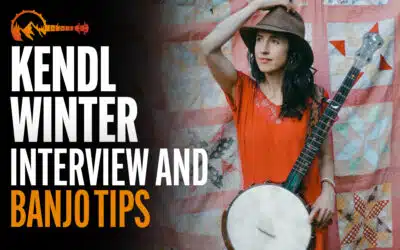If you’re a banjo player (and if you’re reading this blog post, there’s a 99.9999% chance you are), it’s a pretty safe bet you’re familiar with the Earl Scruggs classic, “Foggy Mountain Breakdown”. Let’s face it, any bluegrass banjo player worth their salt not only knows this tune, but can play it. Or at least has tried to play it. It’s required listening for any aspiring bluegrass picker. It’s one of those tunes the general public can readily identify – albeit erroneously, usually confusing it with “Dueling Banjos” (hey, honest mistake, right?). Regardless of whether they think of it as the theme from Deliverance or the “chase” song from Bonnie and Clyde (which, BTW, it is), pretty much everyone, banjo player and layperson alike, knows what the song sounds like.
So let’s get to our story…
FULL ACCESS TO 200+ LESSONS
3 GREAT OPTIONS FOR YOU

Annual Subscription
SAVE OVER 70%Full access to Banjo Mountain (200+ lessons) for $139.95 saving you over 70%.
Bills annually. Cancel anytime.
3-Month Subscription
Full access to Banjo Mountain (200+ lessons) for $75 saving you over 35%.
Bills every 3 months. Cancel anytime.
1-Month Subscription
Full access to Banjo Mountain (200+ lessons) for $40.
Bills monthly. Cancel anytime.
STILL NOT SURE?
Latest From Our Blog
Nora Brown: A Rising Star In The Banjo World
Nora Brown is someone to keep your eye on. Indeed, at a young age, she is already turning heads. Hailing out of Brooklyn, New York, Nora has played festivals all over the country. Don’t let Brooklyn throw you off (no offense Brooklyn-ites). While having urban origins,...
The 1st Banjo Mountain Practice Competition
We are pleased to announce the first Banjo Mountain Practice Competition. This is for Banjo Mountain students. It costs nothing to enter and you can do so once you have subscribed. The goal here is to encourage daily practice by submitting your video for your peers to...
Kendl Winter Interview & Banjo Tips
Video interview with Kendl Winter where she shares tips and advice for banjo players, talks about how she got into banjo, what projects she's currently working on and her upcoming album "Banjo Mantras." Her single "Humming Mantra" will be live September 8th! A...



